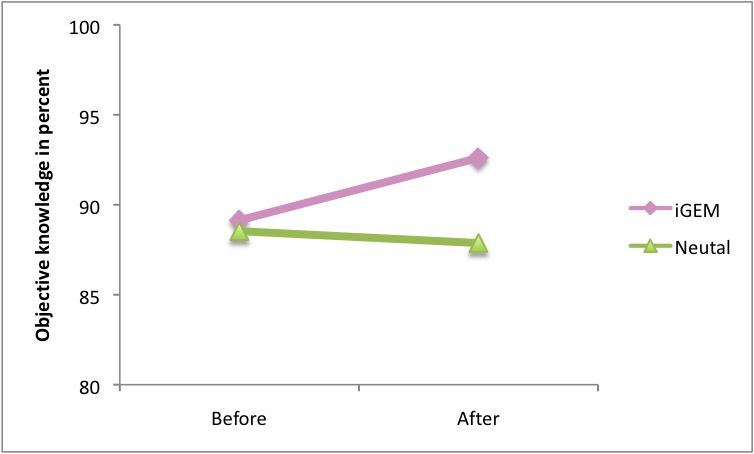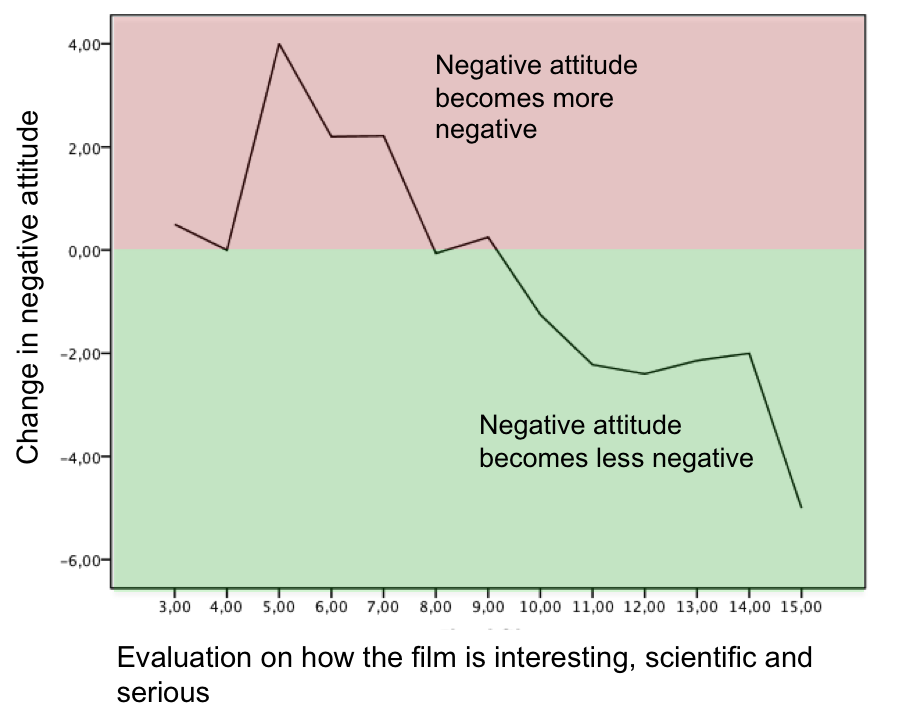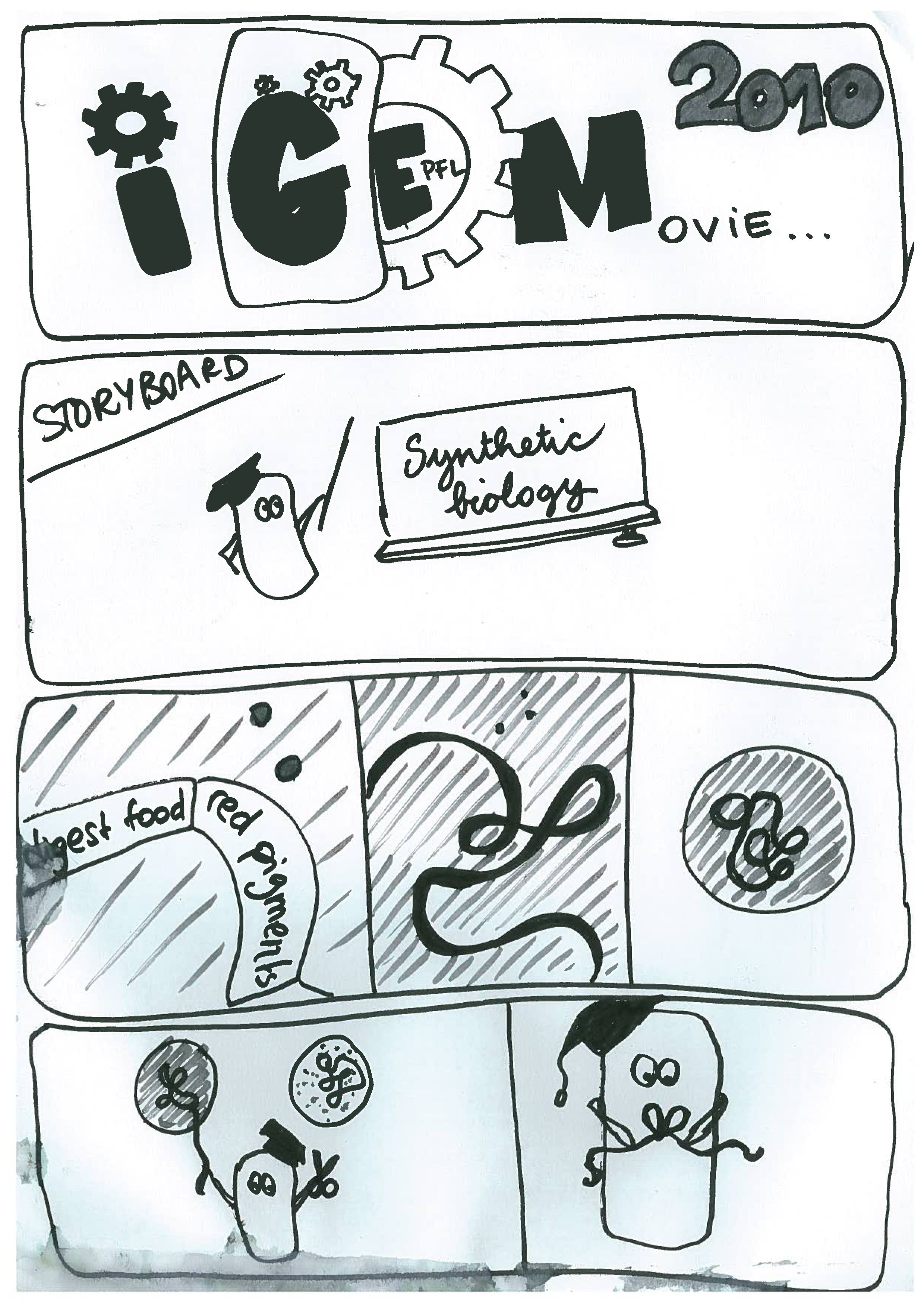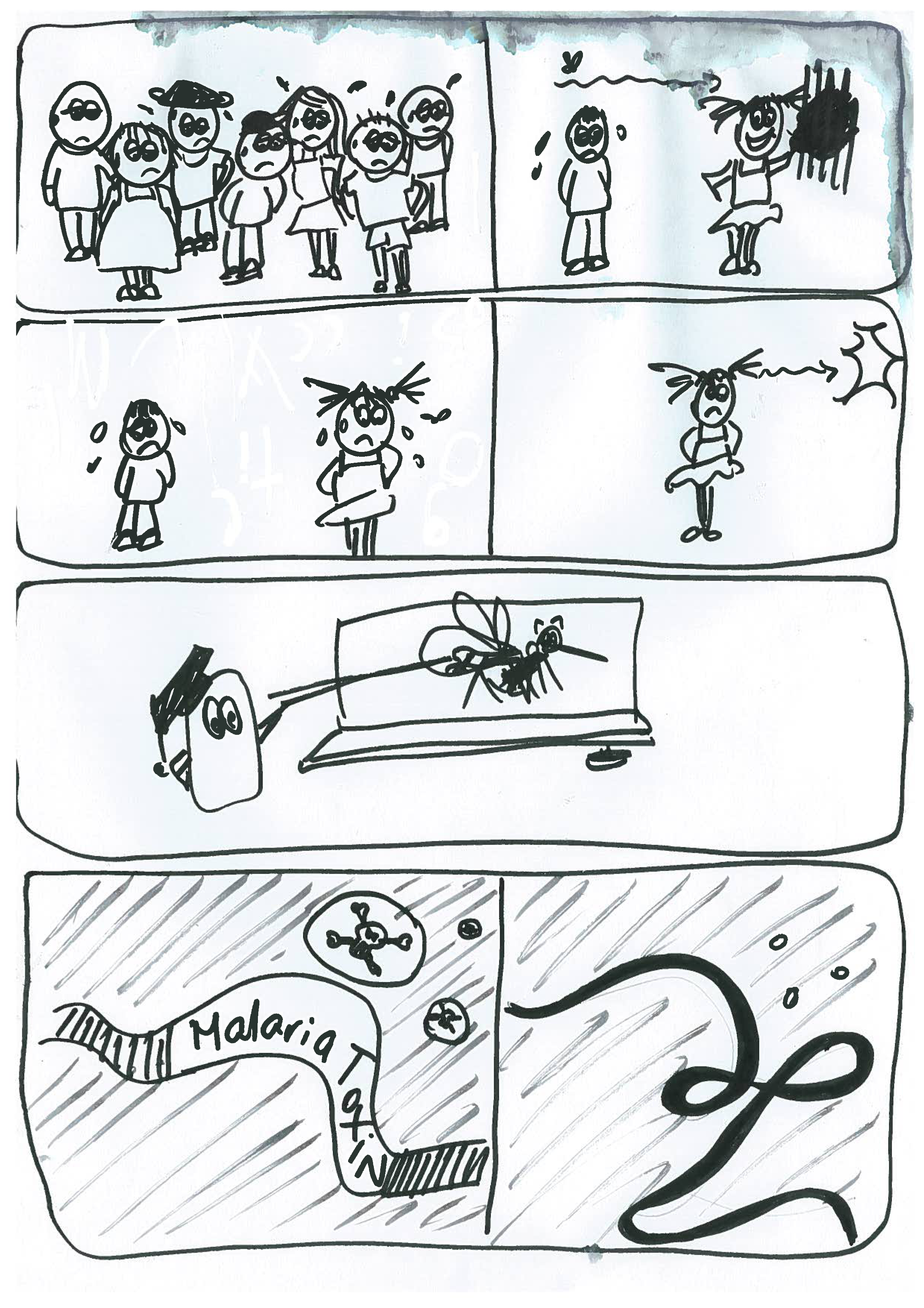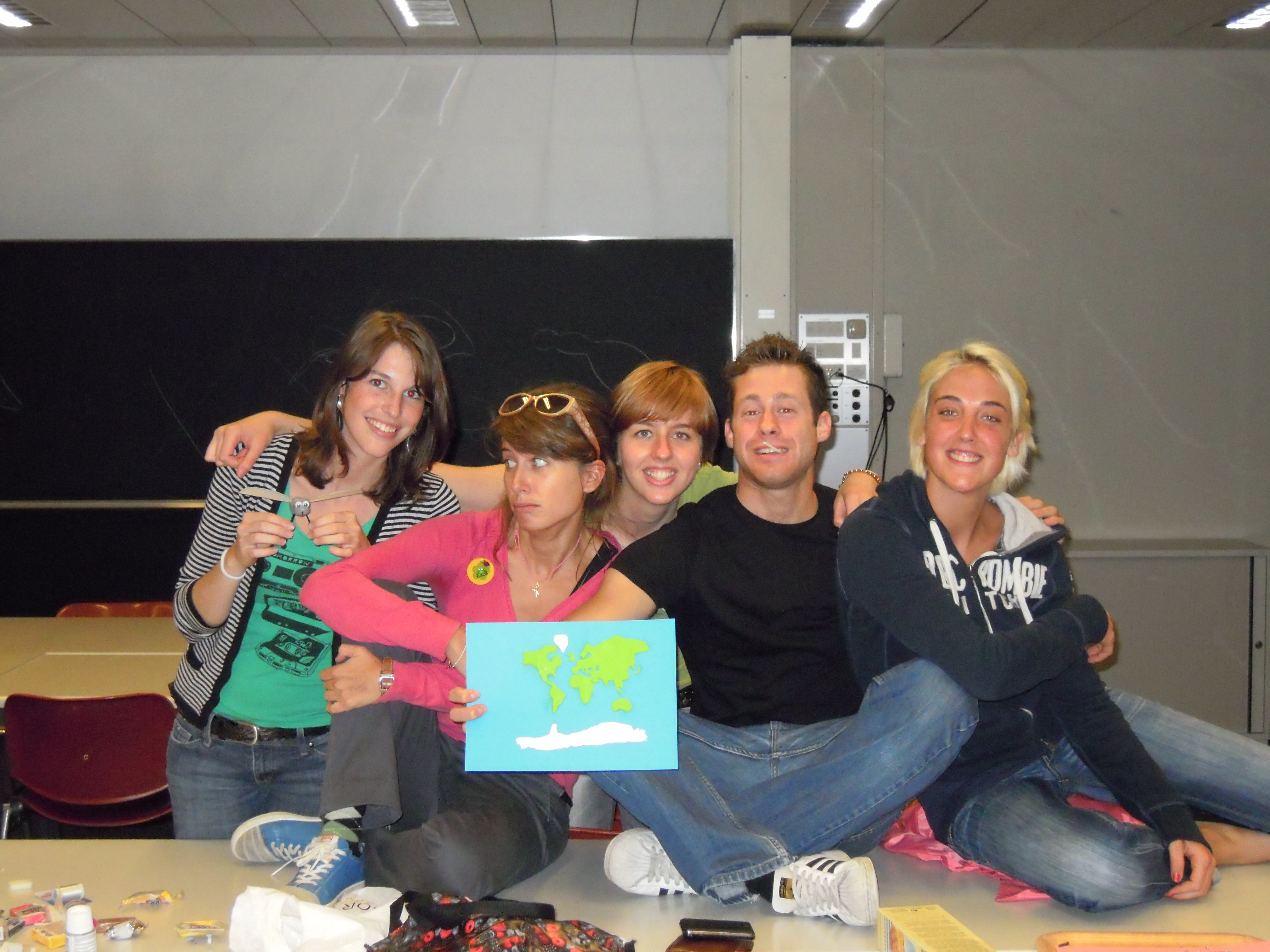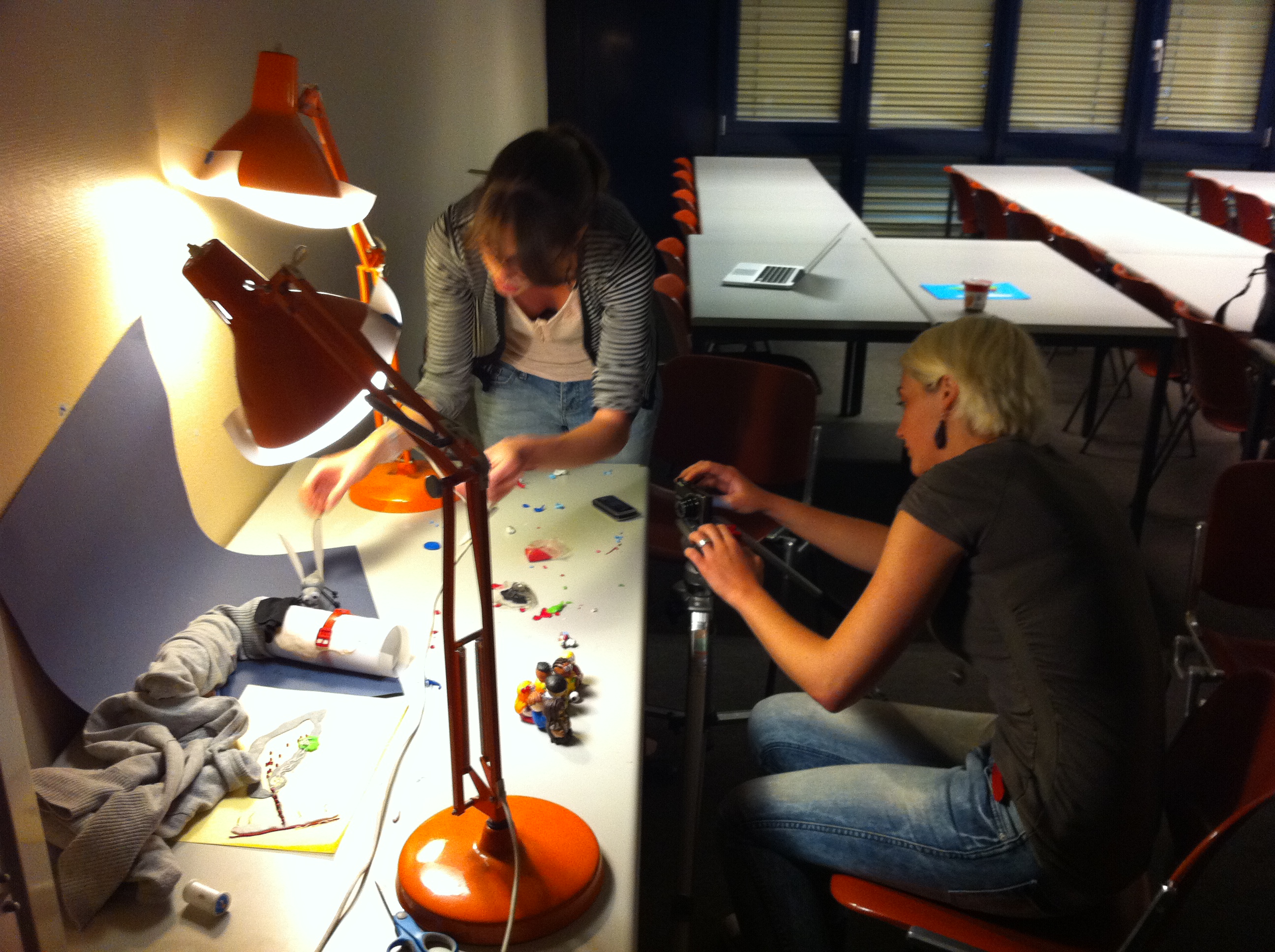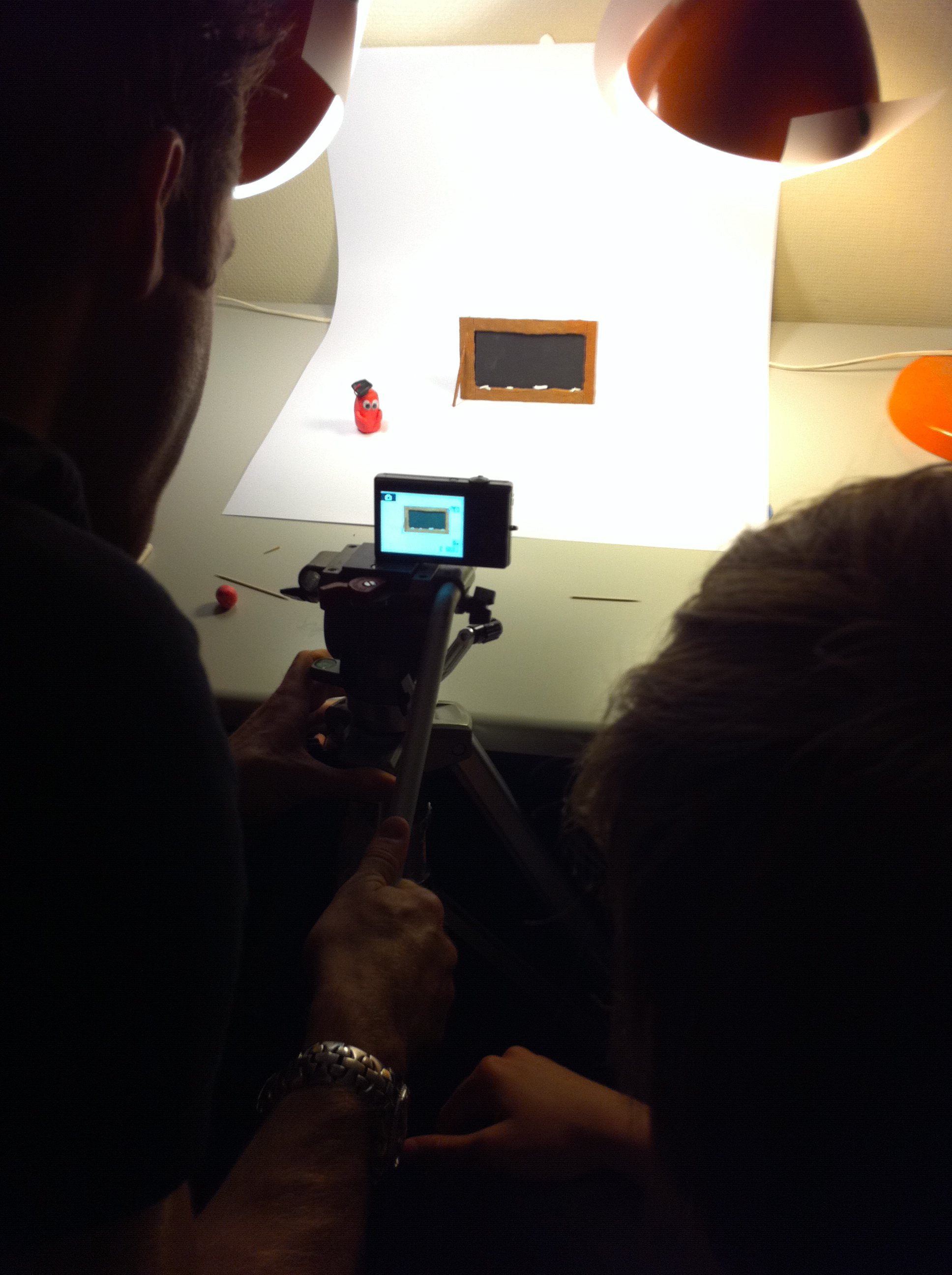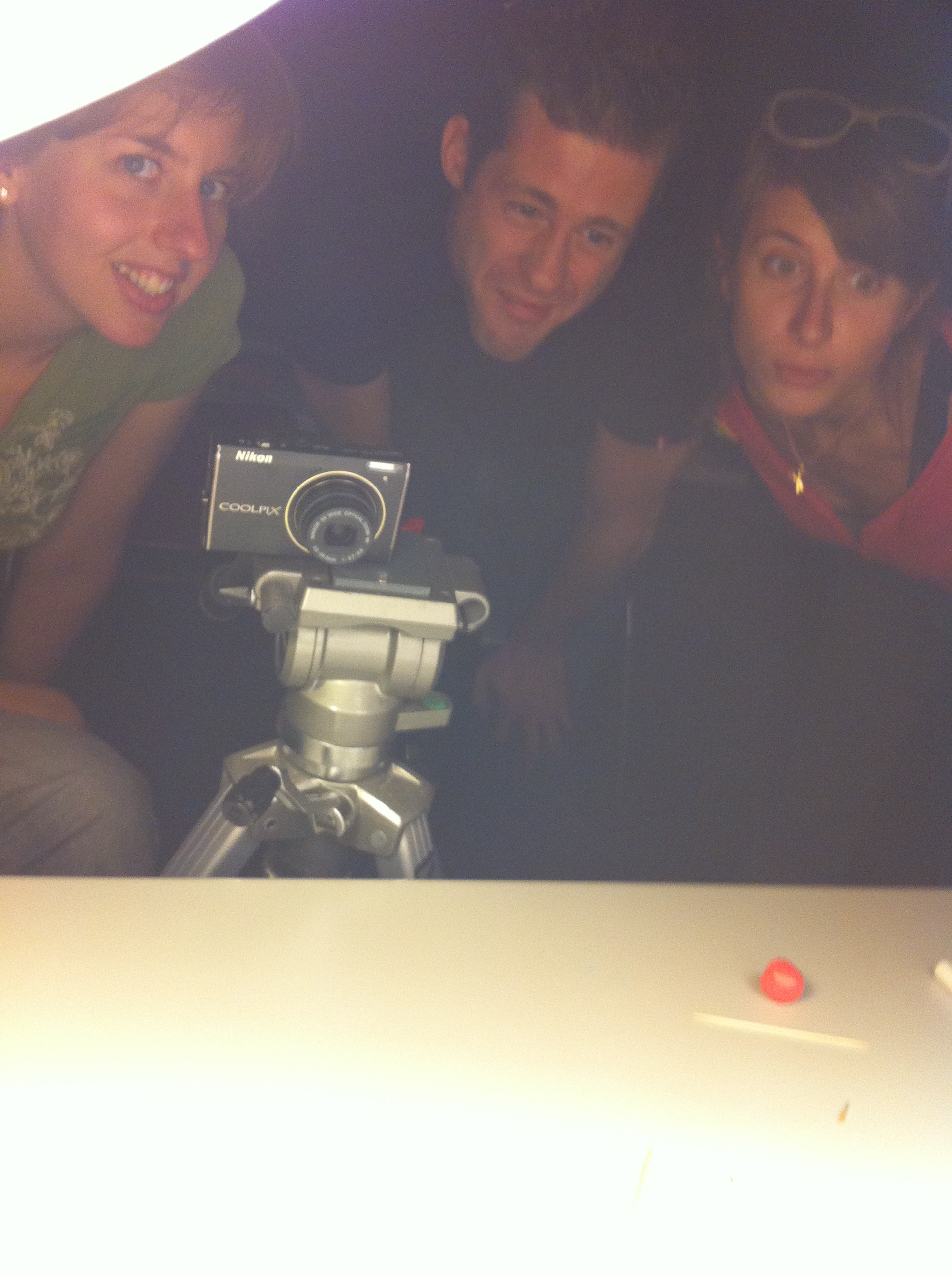Team:EPF Lausanne/Humanpractices Movie
From 2010.igem.org


Contents |
The Movie
Our Human Practices project is an animated movie. The goal of this project is to promote a better understanding of Synthetic Biology. Simplification and playfulness are intended to reach a wide audience. Take a look...
Results of the survey
To measure the impact of our movie, we created a [http://bit.ly/deCBp5 survey] with the help of a social psychologist (Vincent Pillaud, UNIL), whereby participants were either exposed to our movie or a [http://www.youtube.com/watch?v=_nmRUwLV8ZI neutral film] as a negative control. We assessed the attitude of people and their knowledge (subjective and objective) regarding synthetic biology before and after watching the film, as well as their emotions (order counterbalanced) and their judgment of the movies. 190 students participated voluntarily in this study (M age = 21.6 years).
- Our movie increases the objective knowledge
We took into account two kinds of knowledge: the subjective knowledge and the objective knowledge. The subjective knowledge refers to a self-evaluation of knowledge whereas the objective knowledge refers to specific knowledge. The subjective knowledge was assessed through a scale ranging from 0 (no knowledge) to 100 (excellent knowledge). The objective knowledge is based on 12 questions about synthetic biology, 8 about general knowledge (for example “in Synthetic Biology, you insert genes to cells”) and 4 about knowledge in link with the film (for example “We can find populations of bacteria in the gut of mosquitoes”). In order to test the effect of our film of those two variables, we asked the same questions before and after the movie. A good answer counted for 1 point, an error for 0 point. The total was scaled to 100 (Figure 1). The results indicate a significant increase for the participants who saw our film whereas this wasn’t observed for the participants who saw the neutral film. Statistically, we tested the interaction between the type of film and the difference in knowledge (after minus before seeing the film). We obtained F (1,188) = 13.53, p <.001 for this analysis. Such a result indicates that our participants understood our movie and learned from it. Moreover, we obtain the same effect when we only consider the questions related to general knowledge and with the questions in link with our film separately. Respectively, we obtained F (1,188) = 9.87, p = .002 and F (1,188) = 6.06, p = .015. The subjective knowledge also increased after watching our movie but we observe this as well with the neutral movie (Figure 2). The interaction between the difference in subjective knowledge and the type of film lead to a marginal effect, F (1,188) = 3.20, p = .075.
- Our movie leads to a negative attitude change toward synthetic biology
We assessed both their positive and negative attitudes about Synthetic Biology separately according to the method of [http://psycnet.apa.org/?fa=main.doiLanding&fuseaction=showUIDAbstract&uid=1972-27077-001 Kaplan, 1972]. This allowed us to evaluate the different aspects in the attitude of the subject one could consider: they can evaluate synthetic biology as promising as well as potentially dangerous or having harmful effects at the same time. The results indicate that the positive attitude tends to decrease after watching the movie (Figure 3). We observe a similar effect with a neutral film. This inference was made as we observed a main effect of attitude change, F (1,188) = 53.23, p <.001 but no interaction of this difference with the type of film, F (1,188) <1, non significant. However, our iGEM movie has no effect on the negative attitude, F (1,188) <1, non significant. (Figure 4).
In order to better understand this change in attitudes, we tested if the perception of the movie had an effect on this change. Participants judged the movie using three items: to what extent you evaluate the film as serious, scientific and as interesting using a 5 point scale ranging from 1(not at all) to 5 (extremely). Interestingly, we observed an interaction effect between the evaluation and the attitude change (Figure 7). More specifically, we observed that the more they evaluated the film as serious, scientific and interesting and the more positive their attitude changed. We observed this marginally on positive attitudes, F(1,188) = 3.19, p = .078 and significantly on negative attitudes, F(1,188)= 25.1, p <.001.
As 73% of the participants evaluated the film quite badly (below or equal to 10 out of 15), we can understand why the general tendency of our results was indicating a negative attitude change despite of our playful movie and its positive message about Synthetic Biology.
- Emotions tend to become slightly more negative
We were also interested in emotions that could be triggered by the movie. We asked the participants to indicate the extent to which they feel scared, nervous, afraid (negative emotions), interested, alert and enthusiastic (positive emotions) toward Synthetic Biology. These 6 items were taken from the [http://www.ncbi.nlm.nih.gov/pubmed/3397865 PANAS, Watson & Tellegen, 1988]. We observe a similar decrease in the positive emotion for both movies (Figure 5), F (1,188) = 9.97, p = .002. We observed anyway a small but significant increase in negative emotions triggered by our movie, F (1,188) = 4.76, p = .03 (Figure 6).
- Discussion of the results
This study showed that we could significantly increase the knowledge of people about our project and synthetic biology by showing our movie. In addition we could see how the perception of the film (as scientific and serious) is important for a change in the attitude of people. Only people, who evaluated the movie as serious, scientific and interesting, had a more positive attitude after watching the film.
These results are quite coherent with what has been reported in the literature about genetic manipulations, like human cloning or genetically modified organisms (see [http://poq.oxfordjournals.org/content/68/1/131.short Nisbett, 2004] for an illustration). It confirms that even when people understand the topic, this is not necessarily accompanied by an increase in positive attitude regarding the topic.
Concerning our finding that a change in attitude seems to be rather difficult to achieve by showing a playful, but instructive movie, we should say that we do not think that skeptical attitude of people towards synthetic biology is necessarily a bad thing which needs to be changed. The important thing is rather to make people more aware about the dangers and benefits of genetic manipulations. We should advocate rational thinking and an ethical debate, which can usually hardly keep up with the constantly evolving scientific methodologies.
Movie: The Story Board
That's how everything started.
Movie: The Making of
The "sounds" evening movie...
And also some pictures....

 "
"












